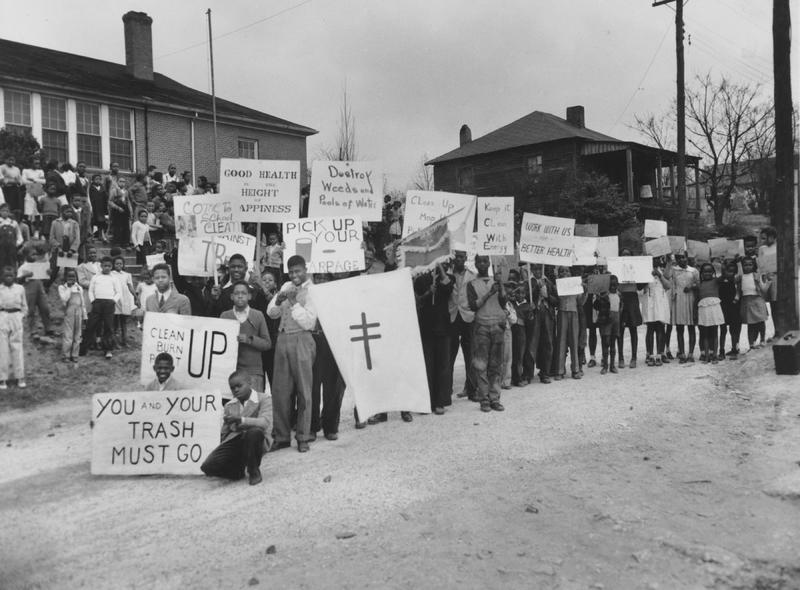Living Without the Basics

Courtesy of Kenan Research Center at the Atlanta History Center
Healthy neighborhoods require sanitation infrastructure–clean water, working sewage systems, trash and garbage disposal, and pest control. But these services have not been equally available to all communities.
Most of us take for granted that when we turn on the faucet in our homes, we will be able to drink the water. Having safe, drinkable water and proper sanitation was a proud public health achievement in this country, and many of the diseases caused by poor sanitation and water conditions have ceased to exist for most.
For some in America, the water coming out of their faucets is still not fit for drinking, and for others, there is no running water in their homes. Today more than 639,000 households lack indoor plumbing, and some U.S. residents still lack basic water and sanitation services. This lack of the basics leads to waterborne disease, unsanitary conditions, and a burden to families who must obtain drinking water from other sources. Some of these families are among the poorest in the country, and live in rural and urban communities in Alaska, southern California, rural areas of Appalachia, the colonias along the U.S.-Mexico border, U.S. territories, and Indian reservations.